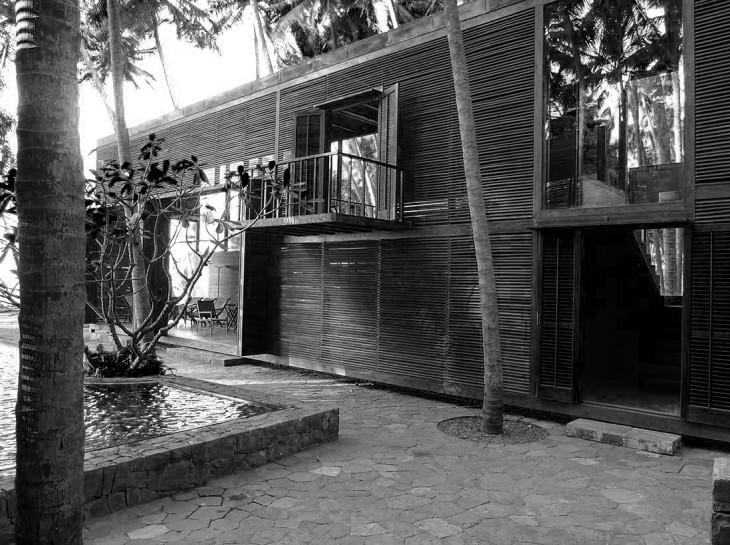
The aim of this report is to summarize the main ideas of the first puzzle activity. On one hand is the Palmyra House, a project of the Studio Mumbai Architects from India. On the other hand is the book from Toyo Ito – “Tarzans in the Media Forest’’, which gives the author’s view on what architecture has become and what it should be. The report consists of two parts; the first part explains the link between Ito’s ideas and how they are manifested in the Palmyra House and the second part gives overall conclusions on the studied material as well as my personal findings on this topic and how I would like to incorporate them in my project.
The Palmyra House is a project that sets a clear example of the metaphorical and positional relationships between architecture and nature. This can be seen from the positioning of the two rectangular volumes throughout the coconut field. The volumes create the sense of togetherness with the surrounding area, being built in unison with the trees and the water from the environment. Even more so, their structure is purely from natural materials, with big openings that use the flow of air in a way that gives the feeling of being outside even when you are inside.
Although seemingly unrelated, this project can be easily linked with Ito’s main ideas. He encourages the creation of architecture that correlates with its surroundings, similar to the behavior of trees in their environment. The Palmyra House not only does fulfill this idea of an architectural creation, with its structure, but also integrates the metaphorical and positional relationships in a way that gives one the feeling of living together with nature. It is built not solely on an idealized image of an architectural mind, but rather built gradually and changing throughout the process. This is exactly as Ito tree metaphor in his book – the tree branches in accordance to its environment, not limited by it, but finding its own way to grow.
The Palmyra House is a fascinating example of how architecture can work in such harmony with nature, being built with simple tools but still creating an advanced architectural concept. In the process of studying these materials, I have learned the relationships of architecture and nature, how they can correlate, behave and grow together instead of architecture opposing nature. However, I believe that this is only the start of their coexistence and in my project I would like to make even stronger bond between the two on a big scale.
SO.3 Advanced Architecture Concepts , MAA01 Institute for Advanced Architecture of Catalonia, Fall 2015 Tutors: Manuel Gausa // Maite Bravo // Ricardo Devesa